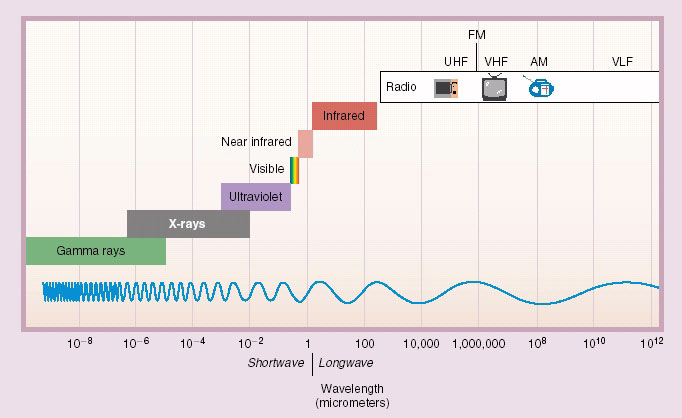




|
The electromagnetic spectrum is simply the full range of wave frequencies that characterizes solar radiation. Although we are talking about light, most of the electromagnetic spectrum cannot be detected by the human eye. Even satellite detectors only capture a small portion of the entire electromagnetic spectrum. From longest to shortest wavelengths, the spectrum is usually divided into the following sections: radio, microwave, infrared, visible, ultraviolet, x-ray, and gamma-ray radiation. Humans can only see a narrow band of visible light, which is a small fraction of the electromagnetic spectrum. We perceive this radiation as the colors of the rainbow ranging from red to violet, with reds having longer wavelengths (~ 0.7 micrometers) and violet having shorter wavelengths (~ 0.4 micrometers). But keep in mind how “long” these wavelengths really are. One micrometer is equal to a millionth of a meter which is approximately 1/100 the diameter of a human hair – that’s small! For comparison, microwaves are on the order of one centimeter long and television and radio waves have lengths greater than one meter.
Continue to the next page
Go back to the previous page |
